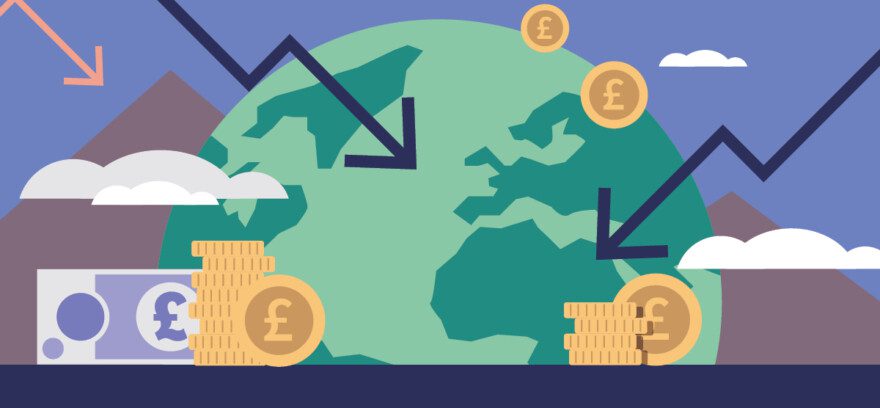UK markets declined this week as investors remained cautious ahead of the UK’s July 4th General Election, with the FTSE 100 Index falling by 0.51% to trade at 8,215 points at the time of writing.
The number of foreign direct investment projects in the UK has fallen to a near 12-year low, fuelling concerns about overseas investors’ appetite for the country in the run up to the General Election next week.
A total of 1,555 foreign direct investment projects landed in the UK in the fiscal year that ended in March 2024, according to data published by the Department for Business and Trade on Thursday. The figure was down by 6% on the previous fiscal year and 31% below the peak in 2016-17, the year of the Brexit referendum.
Software and computer services remained the strongest sector for foreign direct investment but registered the biggest year-on-year decline with new projects falling by 31%. Foreign investment is a key driver of growth in productivity and living standards and the number of new projects was little higher than the 1,538 registered in 2020-21, the first year of the pandemic, when travel and business activity were heavily restricted.
The UK is seeking to attract more inward investment after the US and EU launched ambitious programmes in the form of the Inflation Reduction Act and NextGenerationEU.
The estimated number of jobs created by foreign direct investment fell by 10% year on year to 71,478, the figures from the Department for Business showed. Boosting investment will be critical for the next UK government to grow the economy, with foreign direct investment being a key component that is vital to sustainable growth.
The UK economy rose 0.7% the first quarter of 2024, slightly higher than 0.6% in the initial estimate and rebounding from a fall in the first quarter, the Office for National Statistics said on Friday.
This was the fastest growth since the end of 2021 and ended last year’s technical recession. It was also the highest of any G7 country. However, monthly figures released earlier in the month showed the economy reported zero growth in April, as wet weather weighed on activity.
Commodity markets
In the commodity markets, Brent crude futures traded around $86 per barrel on Friday and are set for a weekly rise, as supply disruption risks from rising geopolitical tensions in the Middle East helped to counter demand fears after a surprise build in US stockpiles.
The US Energy Information Administration reported a 3.6 million barrel jump in the country’s crude oil stocks last week. Analysts polled by Reuters had expected a drawdown of 2.9 million barrels. Worries over the potential for the Israel-Hamas war in Gaza spreading to Lebanon limited price declines.
Cross-border strains between Israel and Lebanon’s Hezbollah have been escalating in recent weeks, stoking fears of a war that could draw in other regional powers, including major oil producer Iran. If a contagion was to occur, it could have a significant impact on crude supplies from the Middle East.
Turkish President, Tayyip Erdogan said his country stood in solidarity with Lebanon and called on the region’s countries to show their support.
Gold Prices traded around $2,330 on Friday, and are set for a weekly fall, as the US dollar hovered near an eight week high, making bullion more expensive for other currency holders, while the US benchmark 10 year treasury yields also held firm.
US equity markets
US equity futures rose on Friday as investors look ahead to the release of core personal consumption expenditure price index inflation data for May which could shed light on the path for Federal Reserve interest rate cuts.
In Thursday’s regular session, the Dow Jones Industrial Average gained 0.09%, the S&P 500 rose 0.09%, while the Nasdaq Composite advanced 0.30%.
The American economy expanded at a slightly upwardly revised 1.4% rate last quarter, the Commerce Department’s Bureau of Economic Analysis said in its third and final estimate of GDP for the January to March quarter. Growth was previously estimated at 1.3%. This compares with a growth rate of 3.4% in the fourth quarter and was the slowest quarterly growth since spring 2022.
Consumer spending grew by just 1.5%, down from an initial estimate of 2%, a sign that high interest rates may be taking a toll on the economy. However, Thursday’s report showed that the January-March slowdown was caused mainly by two factors, a surge in imports and a drop in business inventories, which can often vary from quarter to quarter and do not necessarily reflect the underlying health of the economy.
Imports reduced first quarter growth by 0.82% and lower inventories reduced it by 0.42%. The majority of economists believe that growth has picked up in the current quarter. The Commerce Department will issue its first estimate of the current quarter’s economic performance on July 25th.
Elsewhere, first-time applications for US unemployment benefits fell by 6,000 to a seasonally adjusted 233,000 for the week ended June 22nd, the Labor Department said on Thursday. However, continuing claims rose to 2021 highs, suggesting a cooling of the labour market.
The information provided in this communication is not advice or a personal recommendation, and you should not make any investment decisions on the basis of it. If you are unsure of whether an investment is right for you, please seek advice. If you choose to invest, your capital may be at risk and the value of an investment may fall as well as rise in value, so you could get back less than you originally invested.
